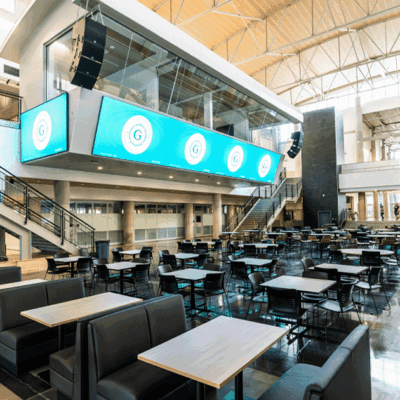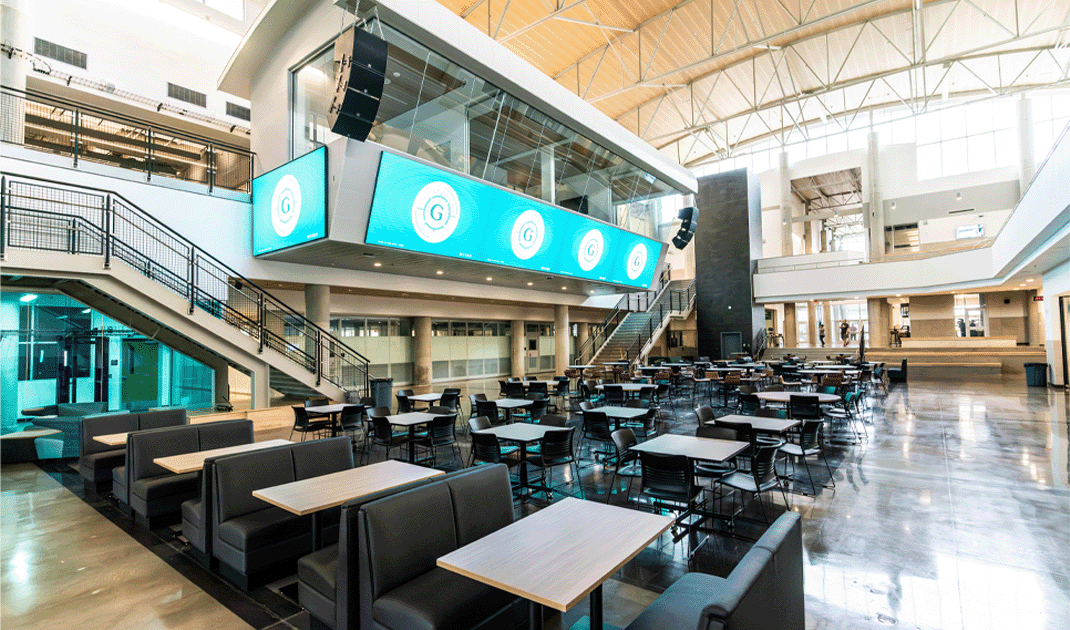
The Future Ready Complex: Georgetown’s Blueprint for Modern CTE
“It’s created an opportunity for students to find what they’re passionate about and then grow into that. And the community recognizes that and appreciates it.”
Robert Thomas, GISD Innovation Facilitator
The Challenge
Some 30 miles north of Austin, the city of Georgetown found itself growing at an exponential rate. Once considered a small suburb of the Texas capital, the community had to act fast to keep up with the increase in students into their school system.
Quick Facts
- Location: Georgetown, TX
- Students in District: 13,000
- Size of New Facility: 241,000 sq ft
- Students Visiting Complex Per Day: 1,000+
- Number of Advanced CTE Pathways: 8
At the time, Georgetown Independent School District (GISD) had a decent career and technical education (CTE) program, but it was quickly becoming outdated — so much so that teachers would bring in their own old furniture or pick something up at a garage sale, considering that an upgrade.
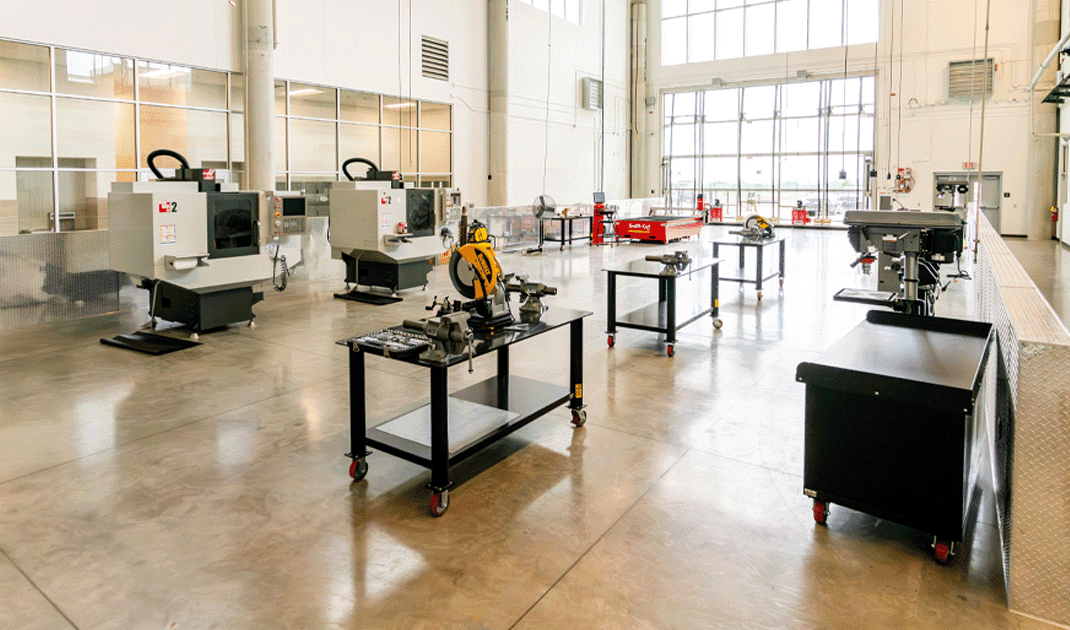
And while they had, for instance, a certified nursing assistant (CNA) program, it was taught using old hospital beds and lacked enough manikins for students to adequately train on. Beyond the physical condition of the equipment, the various CTE programs were spread out across three high schools, forcing students to shuffle around to different locations in order to explore all available options.
“We thought we had a wonderful CTE class, but it was very old furniture that maybe had been donated. We tried very hard to simulate real world.”
Meredith Brown, Health Science Instructor
The community set out to build a single facility — aptly dubbed the Future Ready Complex — to house their entire slate of CTE programs and utilize brand new, industry-grade equipment and furniture. Their collective vision was bold, but the final product was beyond even their grandest of intentions. As health science instructor Meredith Brown stated upon completion, “No one could actually visualize the magnitude of this innovative, real-world space that we have.”
The Solution
Once construction wrapped on the 241,000-square-foot facility, district leaders faced the next major challenge of furnishing and equipping the space for modern CTE learning. “We wanted to find a partner that could quarterback what needed to be done because we didn’t have the bandwidth to do it,” says Robert Thomas, GISD Innovation Facilitator. The district ultimately joined forces with Meteor Education and Advanced Technologies Consultants (ATC).
Under this partnership, Georgetown was able to be fully involved, working alongside architects and interior designers to plan out exactly what they wanted, with the Meteor and ATC reps expertly balancing preferences with availability and budget parameters. “It’s easy to get lost because there are so many different vendors and types of equipment,” says Bretton Shulz, CTE Coordinator. “ATC was able to connect us with the right people.”
All the way through delivery and installation, the ATC rep was on site, even personally carrying new hospital beds up a set of stairs to their proper location. “He kept us from crying,” Sarah Shulz, CNA Instructor, says with a laugh. “He was there all the time, so kind, never lost his cool, even though we were sweating it out and freaking out.”
“We have everything from health science to cosmetology. Meteor was a one-stop shop for all the furniture, getting us all the unique stuff we needed for each of the programs.”
Bretton Schulz, CTE Coordinator
With only five days to go before the school year began, equipment and furniture still needed to be installed. Yet, despite any time crunch or other obstacle, the installation was completed on schedule, allowing Georgetown students to enter a new era of career and technical education.
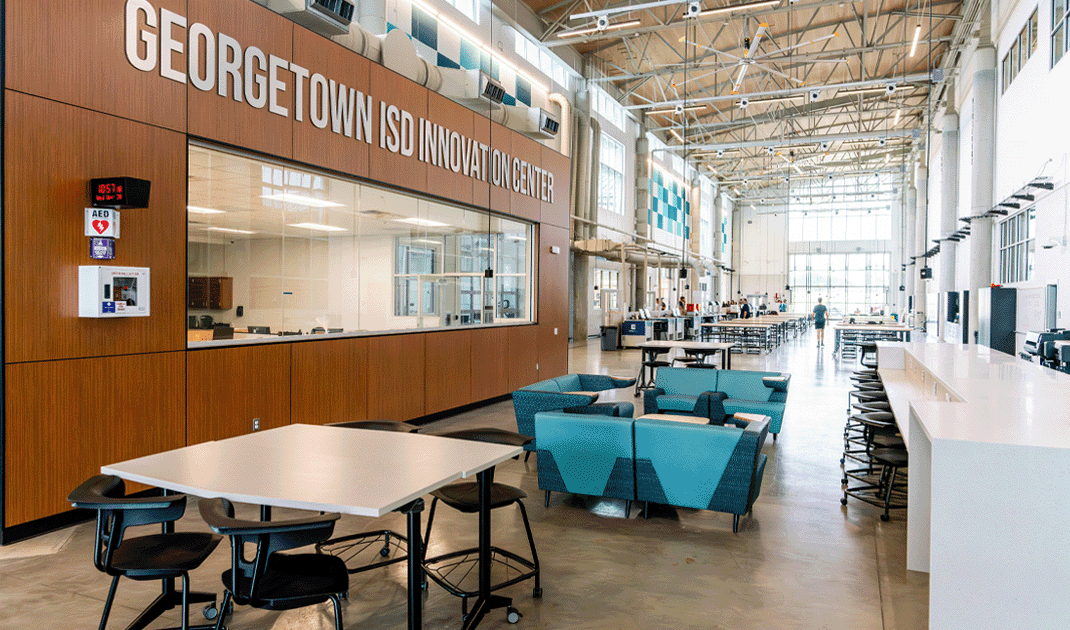
The Impact
When the Future Ready Complex welcomed in the community for the grand opening, it wasn’t uncommon to hear among the crowd of more than a thousand people, “I’ve never been in a public education building like this before.”
While the building itself is impressive, one aspect that stands out is the continuity between the spaces, with high-quality desks, tables, and other equipment coalescing into a seamless, sleek environment. The myriad of available chairs, couches, and other seating arrangements allow for students of all sizes, big or small, to find a comfortable spot for learning, with the space still encouraging movement throughout each classroom.
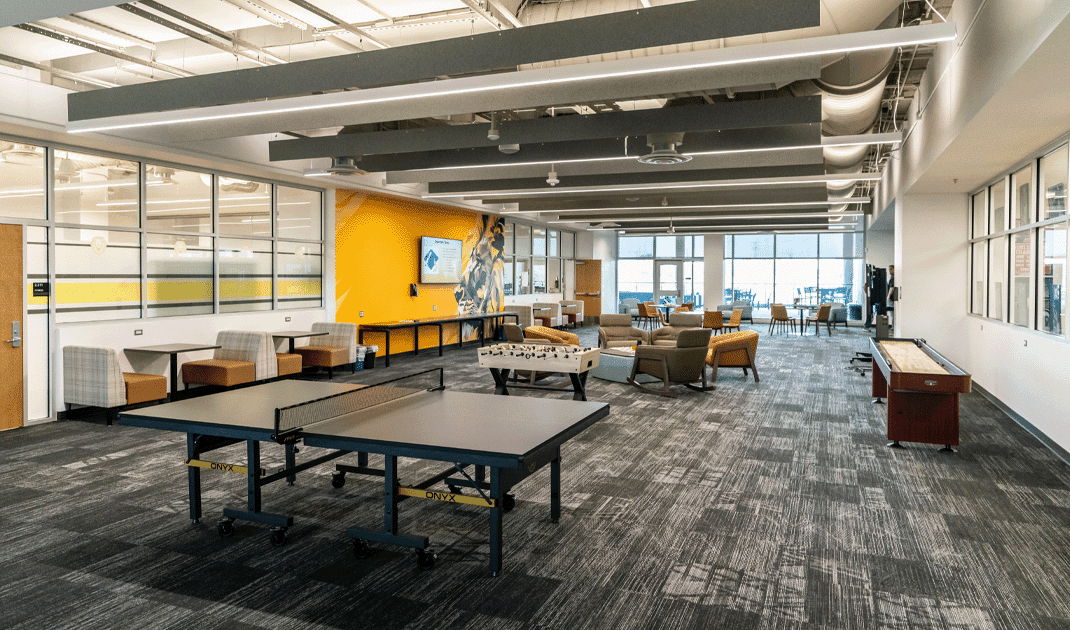
With each program now sporting industry-grade equipment, the students experience real-world simulations of professional environments. Brown notes that students have the easiest of transitions when doing observations at the hospital “because our lab and classroom look like a real hospital room.”

As a bonus, by opting for the highest quality of equipment in a single location, the district ended up saving money, as opposed to outfitting the individual schools with their own, cheaper alternatives.
“Their first day on the job won’t be the first time they’ve walked into an ICU room, because they’ve already been in one here.”
Hannah Black, Health Science Theory Instructor
Across the board, teachers have seen an improvement in student behavior. “Because the furniture is so nice, the equipment is so nice,” says Hannah Black, Health Science Theory Instructor, “I feel like they step it up a notch when they come in.”
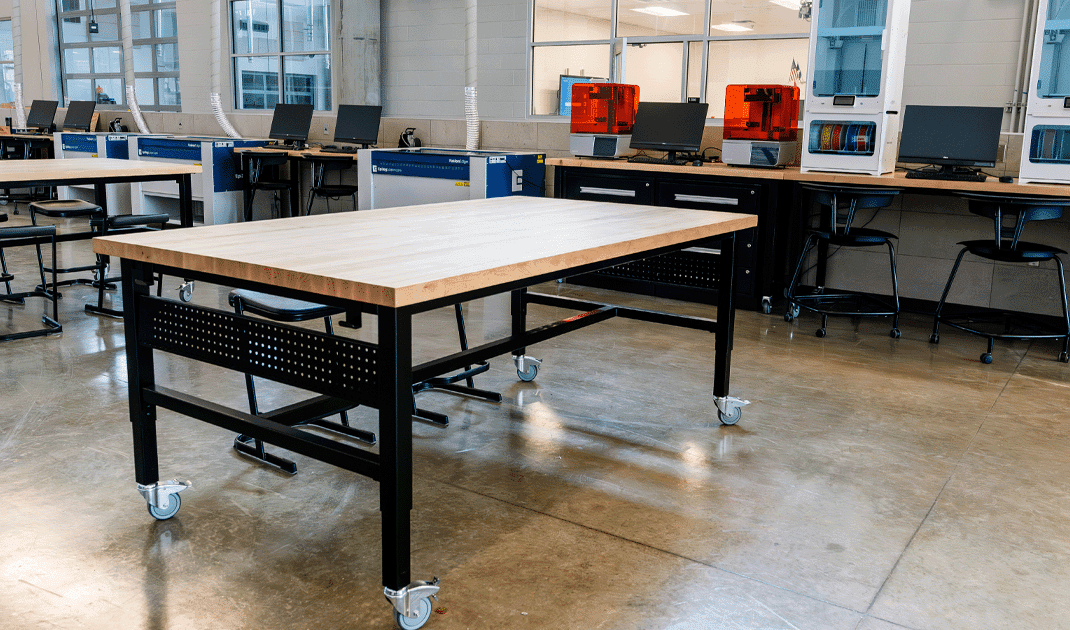
This professional approach has played a strong part in the development of the students’ soft skills, such as face-to-face communication, collaboration, and developing empathy. As Brown says, the students are “much more responsible, compassionate, and empathetic. We see them taking pride in what they do, wanting to improve, to be creative, and to achieve. And we believe it’s because of this open-space concept with wonderful furniture and real-world scenarios.”
“We give them more freedom to choose their own adventure when it comes to their learning. And that respect we provide them allows them to grow up just a little bit more when they come into a space like this.”
Walker Nikoalus, Teacher
Excitement about the CTE building is not reserved solely for the students and teachers, but the greater Georgetown community has embraced and celebrated the new facility as well. People drive by, see this new structure, and want to know what’s inside, so the staff is regularly providing tours to members for the curious public.
But more than a glancing interest in a sparkly new building, the growing city and its assortment of new businesses benefit from the steady flow of educated, qualified, and properly trained individuals that come out of the Future Ready Complex. “Our goal is to make Georgetown thrive,” says Schulz. “So if we can thrive in what we do here, then the city can thrive as well.”
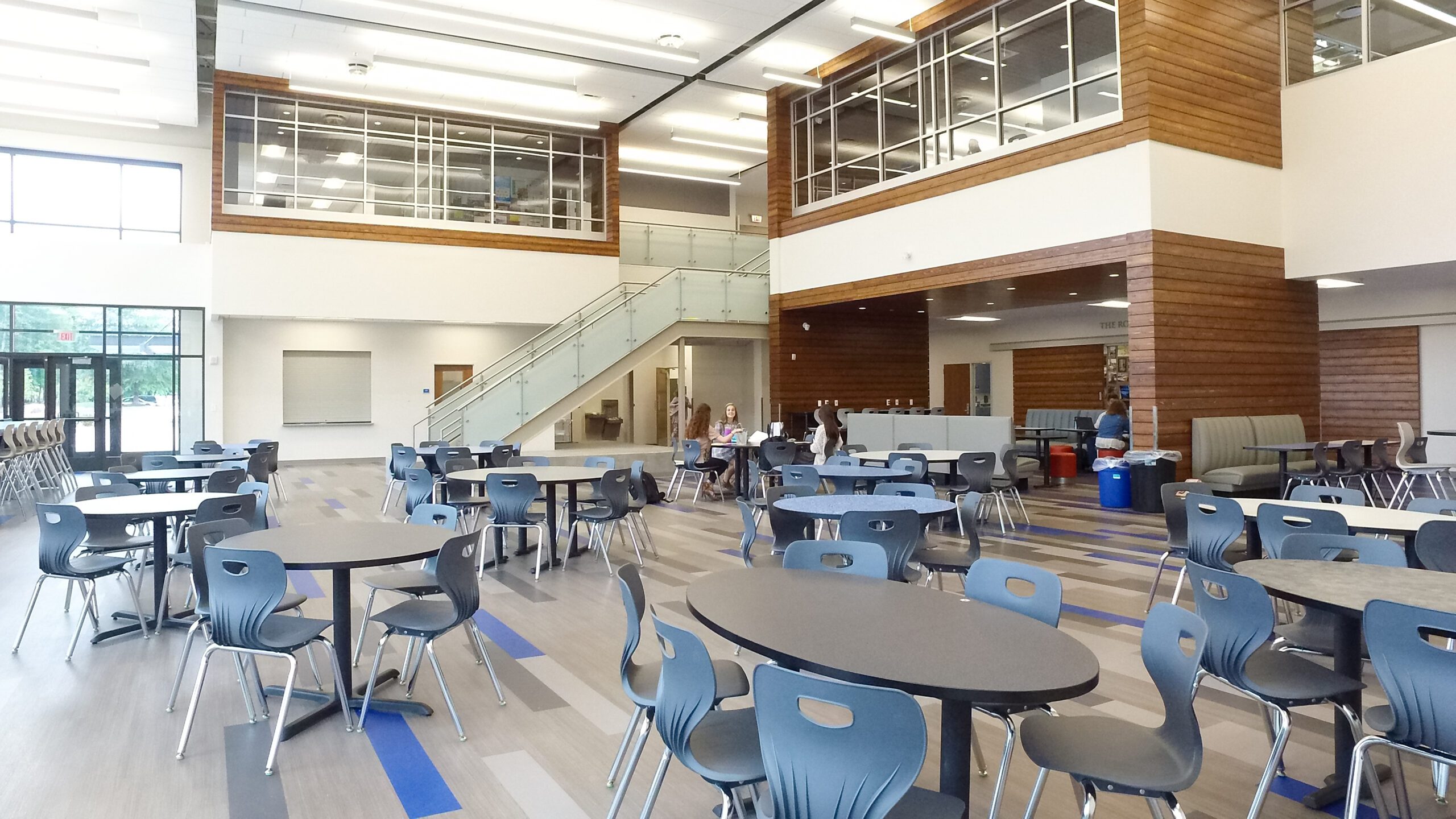
Get in touch
Ready to build a future-ready facility?
Let Meteor bring your CTE vision to life!
